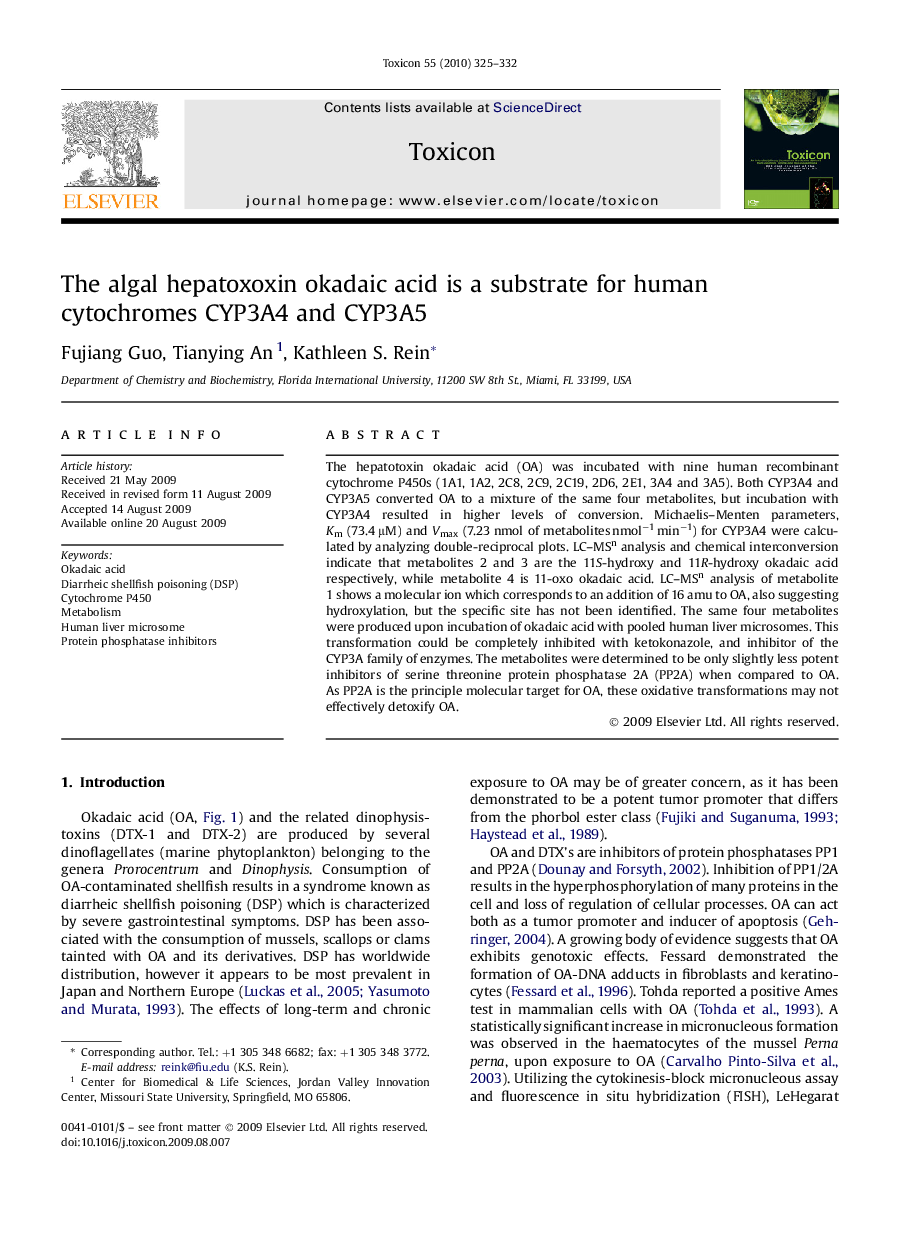| کد مقاله | کد نشریه | سال انتشار | مقاله انگلیسی | نسخه تمام متن |
|---|---|---|---|---|
| 2065327 | 1544179 | 2010 | 8 صفحه PDF | دانلود رایگان |

The hepatotoxin okadaic acid (OA) was incubated with nine human recombinant cytochrome P450s (1A1, 1A2, 2C8, 2C9, 2C19, 2D6, 2E1, 3A4 and 3A5). Both CYP3A4 and CYP3A5 converted OA to a mixture of the same four metabolites, but incubation with CYP3A4 resulted in higher levels of conversion. Michaelis–Menten parameters, Km (73.4 μM) and Vmax (7.23 nmol of metabolites nmol−1 min−1) for CYP3A4 were calculated by analyzing double-reciprocal plots. LC–MSn analysis and chemical interconversion indicate that metabolites 2 and 3 are the 11S-hydroxy and 11R-hydroxy okadaic acid respectively, while metabolite 4 is 11-oxo okadaic acid. LC–MSn analysis of metabolite 1 shows a molecular ion which corresponds to an addition of 16 amu to OA, also suggesting hydroxylation, but the specific site has not been identified. The same four metabolites were produced upon incubation of okadaic acid with pooled human liver microsomes. This transformation could be completely inhibited with ketokonazole, and inhibitor of the CYP3A family of enzymes. The metabolites were determined to be only slightly less potent inhibitors of serine threonine protein phosphatase 2A (PP2A) when compared to OA. As PP2A is the principle molecular target for OA, these oxidative transformations may not effectively detoxify OA.
Journal: Toxicon - Volume 55, Issues 2–3, February–March 2010, Pages 325–332